Amazonia refers to the Amazon rainforest.
Amazonia may also refer to:
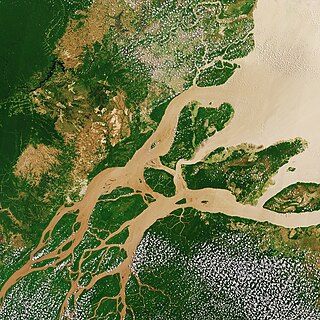
The Amazon River in South America is the largest river by discharge volume of water in the world, and the longest or second-longest river system in the world, a title which is disputed with the Nile.

The Amazon rainforest, also called Amazon jungle or Amazonia, is a moist broadleaf tropical rainforest in the Amazon biome that covers most of the Amazon basin of South America. This basin encompasses 7,000,000 km2 (2,700,000 sq mi), of which 5,500,000 km2 (2,100,000 sq mi) are covered by the rainforest. This region includes territory belonging to nine nations and 3,344 formally acknowledged indigenous territories.

Amazonas is a state of Brazil, located in the North Region in the north-western corner of the country. It is the largest Brazilian state by area and the ninth-largest country subdivision in the world. It is the largest country subdivision in South America, being greater than the areas of Chile, Paraguay, and Uruguay combined. Mostly located in the Southern Hemisphere, Amazonas is the third-largest country subdivision in the Southern Hemisphere after the Australian states of Western Australia and Queensland. Located entirely in the Western Hemisphere, it is the fourth-largest country subdivision in the Western Hemisphere after Greenland, Nunavut, and Alaska. If independent, Amazonas could become the sixteenth-largest country in the world, slightly larger than Mongolia. Neighbouring states are Roraima, Pará, Mato Grosso, Rondônia, and Acre. It also borders the nations of Peru, Colombia and Venezuela. This includes the Departments of Amazonas, Vaupés and Guainía in Colombia, as well as the Amazonas state in Venezuela, and the Loreto Region in Peru.
Amazonas may refer to:

The Amazon basin is the part of South America drained by the Amazon River and its tributaries. The Amazon drainage basin covers an area of about 7,000,000 km2 (2,700,000 sq mi), or about 35.5 percent of the South American continent. It is located in the countries of Bolivia, Brazil, Colombia, Ecuador, Guyana, Peru, Suriname, and Venezuela, as well as the territory of French Guiana.
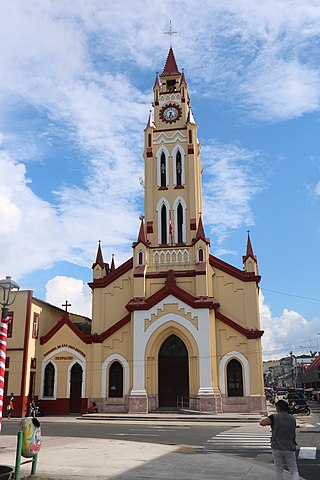
Iquitos is the capital city of Peru's Maynas Province and Loreto Region. It is the largest metropolis in the Peruvian Amazon, east of the Andes, as well as the ninth-most populous city in Peru. Iquitos is the largest city in the world that cannot be reached by road that is not on an island; it is only accessible by river and air.

Loreto is Peru's northernmost department and region. Covering almost one-third of Peru's territory, Loreto is by far the nation's largest department, slightly larger than Japan; it is also one of the most sparsely populated regions due to its remote location in the Amazon Rainforest. Its capital is Iquitos.

The North Region of Brazil is the largest region of Brazil, corresponding to 45.27% of the national territory. It is the second-least-inhabited of the country, and contributes with a minor percentage in the national GDP and population. The area of the region is a little larger than India and a little smaller than the whole European Union. It comprises the states of Acre, Amapá, Amazonas, Pará, Rondônia, Roraima, and Tocantins.

The Putumayo River or Içá River is one of the tributaries of the Amazon River, southwest of and parallel to the Japurá River.

The Urarina are an indigenous people of the Peruvian Amazon Basin (Loreto) who inhabit the valleys of the Chambira, Urituyacu, and Corrientes Rivers. According to both archaeological and historical sources, they have resided in the Chambira Basin of contemporary northeastern Peru for centuries. The Urarina refer to themselves as Kachá, while ethnologists know them by the ethnonym Urarina.
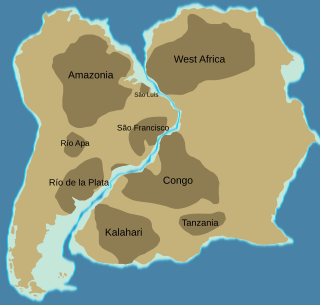
The Amazonian Craton is a geologic province located in South America. It occupies a large portion of the central, north and eastern part of the continent and represents one of Earth's largest cratonic regions. The Guiana Shield and Central Brazil Shield constitute respectively the northern and southern exhumed parts of the craton. Between the two shields lies the Amazon Rift, a zone of weakness within the craton. Smaller cratons of Precambrian rocks south of the Amazonian Shield are the Río de la Plata Craton and the São Francisco Craton, which lies to the east.

The violaceous jay is a species of bird in the family Corvidae, the crows and their allies.

The Amazon rubber cycle or boom was an important part of the economic and social history of Brazil and Amazonian regions of neighboring countries, being related to the extraction and commercialization of rubber. Centered in the Amazon Basin, the boom resulted in a large expansion of colonization in the area, attracting immigrant workers, generating wealth, causing cultural and social transformations, and disrupting local indigenous societies.
Amazonian Jews are the Jews of the Amazon basin, mainly descendants of Moroccan Jews who migrated to northern Brazil and Peru in the 19th and early 20th centuries. The migrants were attracted to the growing trade in the Amazon region, especially during the rubber boom, as well as to the newly established religious tolerance. They settled in localities along the Amazon River, such as Belém, Cametá, Santarém, Óbidos, Parintins, Itacoatiara and Manaus in Brazil, some venturing as far as Iquitos in Peru.
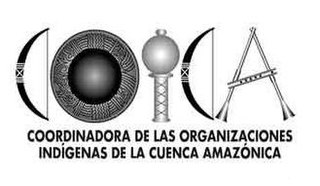
Coordinator of Indigenous Organizations of the Amazon River Basin (COICA) was founded in 1984 in Lima, Peru. This organization coordinates the following nine national Amazonian indigenous organizations:
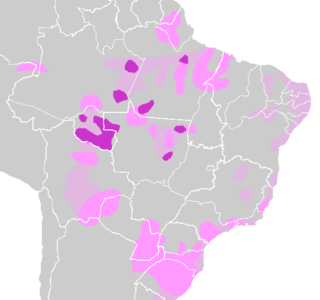
Amazonian languages is the term used to refer to the indigenous languages of "Greater Amazonia." This area is significantly larger than the Amazon and extends from the Atlantic coast all the way to the Andes, while its southern border is usually said to be the Paraná. The region is inhabited by societies that share many cultural traits but whose languages are characterized by great diversity. There are about 330 extant languages in Greater Amazonia, almost half of which have fewer than 500 speakers. Meanwhile, only Wayuu has greater than 100,000 speakers. Of the 330 total languages, about fifty are isolates, while the remaining ones belong to about 25 different families. Most of the posited families have few members. It is this distribution of many small and historically unrelated speech communities that makes Amazonia one of the most linguistically diverse regions in the world. The precise reasons for this unusual diversity have not yet been conclusively determined, but Amazonian languages seem to have had fewer than 10,000 native speakers even before the invasion of European colonists wrought havoc on the societies by which they were spoken. Despite the large-scale diversity, the long-term contact among many of the languages of Greater Amazonia has created similarities between many neighboring languages that are not genetically related. Most indigenous Amazonian people today are bilingual or even monolingual in English, Spanish, Portuguese, French or Dutch and many Amazonian languages are endangered as a result.
Amazon most often refers to:

The Southwest Amazon moist forests (NT0166) is an ecoregion located in the Upper Amazon basin.
A várzea forest is a seasonal floodplain forest inundated by whitewater rivers that occurs in the Amazon biome. Until the late 1970s, the definition was less clear and várzea was often used for all periodically flooded Amazonian forests.

The Amazon biome contains the Amazon rainforest, an area of tropical rainforest, and other ecoregions that cover most of the Amazon basin and some adjacent areas to the north and east. The biome contains blackwater and whitewater flooded forest, lowland and montane terra firma forest, bamboo and palm forest, savanna, sandy heath and alpine tundra. Some areas of the biome are threatened by deforestation for timber and to make way for pasture or soybean plantations.